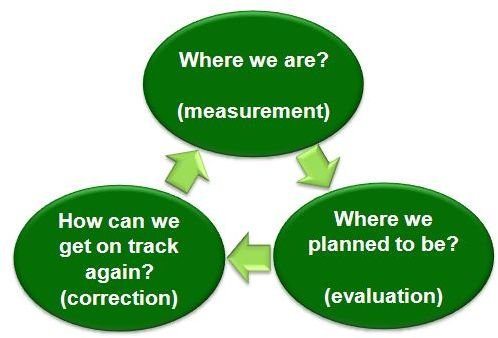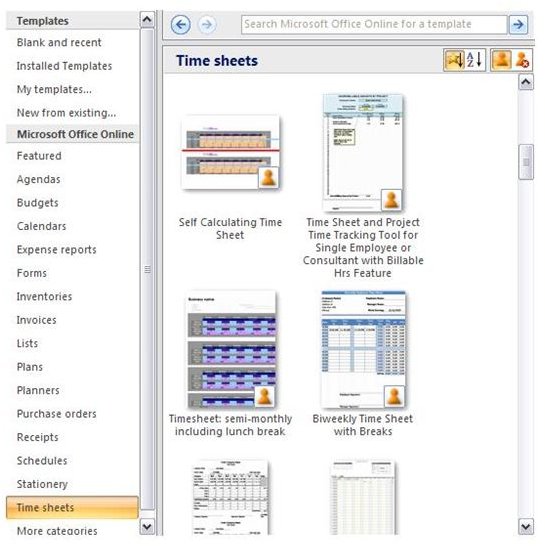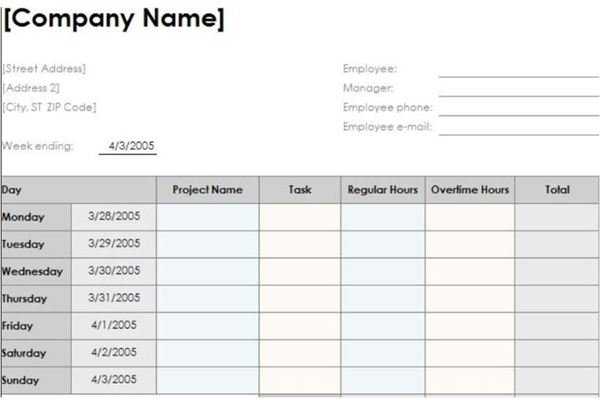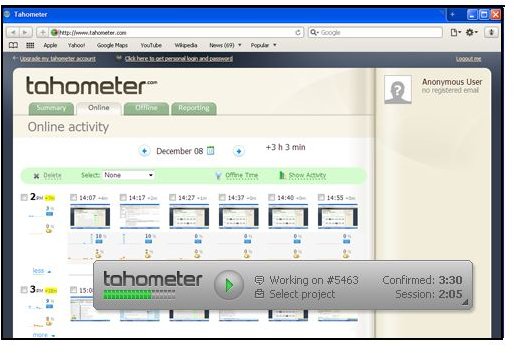Introducing a Weekly Time Tracking System: Do You Simply Impose it?
The Rationale for Shorter Monitoring Periods

Most traders are aware that they cannot make decisions based on future presumptions but tend to rely more closely on the principle of historic volatility. Doing so requires the determination of the timeframe in which changes tend to alter the entire forecast altogether. They often take place within short periods.
The same principle should be applied to monitoring project developments, to which weekly time tracking is recommended. The success of time tracking is also dependent on the support given by team members; particularly if it’s going to be introduced as a new system.
In determining and observing reasonable time frames, the volatility factor is an important consideration. There is emphasis on taking action to leverage the most recent changes or deviations since projects must be finished within a specific time frame using limited resources. Therefore, tracking time on a weekly basis is deemed the most reasonable. Here are some reasons why:

1. Project Leaders Become Aware of Manpower Shortages.
Resource Management deals with loading the right amount of materials and man-hours demanded for an undertaking. As the project progresses, it runs the risk of working under the assumption that all the resources loaded as per plan are always available.
If monitoring is done on a bi-weekly or monthly basis, the initial signs of slippage in manpower resources are overlooked. They become noticeable only when they have already created a larger gap in the original plans.
2. It Becomes Possible to Shift Tasks in Order to Level Manpower.
In noticing the early signs of slacking by way of weekly time tracking, the project manager can take proactive actions by considering the degree of slack allowance. He or she can smooth out the distribution of manpower resources by shifting tasks assignments. Scant resources entail leveling of manpower availability to activities that require completion at the right time particularly if they are linked to other tasks.
3. Tracking Time on the go Keeps the Project Manager in the Know.
A weekly schedule of hours worked allows for easier monitoring to determine if the cost and time budgets are working out as planned. The events that transpired during the week are easier to recall as they are still fresh in the project leader’s mind. The matters of spotting problems in its early stages are easier to act on or decide upon, since there is only a week of time, costs and transactions to account for.
4. Quantitative Measurements of Short-Term Variability Allows for Greater Flexibility.
Increase in prices, shortages of supply, multiple stakeholder requirements and other aspects that require quantitative measurements are easier to address or comply with. Due to the high-degree of competition faced by most businesses, different stakeholders are easily agitated as they wonder if the outcome of the project can still measure–up. In having a weekly time tracking system, quantitative data analysis that requires actual time measurement can be easily accomplished.
Therefore, developing strategic adjustments, re-allocating resources, changing estimates or even decisions on which directions the project should go are easier to visualize and evaluate.
Communicating the System and Its Purpose to Team Members

In developing a weekly time tracking system, the points cited above should be clearly understood by all project team members. Every member has his or her own perspective about project performance since they perform individual work.
Not all team members will have a positive response to weekly monitoring. Make sure everyone on your team knows why the change is happening and what is expected of them. There are several specific itmes you should be sure to discuss:
-
While team members may demand time allotment for free form-thinking without any time constraints, working on CAD drawings and specifications, or on 3D wireframe and other forms of models may not present the flaws or latent problems.
-
Imperfections of designs or innovations are fleshed-out by working on a prototype or on actual implementations; thus, giving emphasis to the value of short-term monitoring on how the project is progressing.
-
Specific time frames and limited resources have to be managed; hence, instituting tests at different levels and in smaller portions are applied as a scientific approach. Updating the project by tracking the actual results of the work done within a shorter span lessens the complexity of addressing slippage before fissures are created.
-
Increasing the visibility of the project’s progression by way of a weekly time tracking system prevents the build-up of work-pressure, which may lead to team burn outs. As loose ends and bugs are addressed before succeeding work is done, team members who will continue with the next phase are assured of working on a clean slate.
Tools for Weekly Monitoring
Tracking time weekly is in itself a problem, especially if there are numerous details to consider and there are more important tasks to manage. However, volume of data should not be the main considerations since there are different time-tracking tools to use.
Keep it in mind that there are other deliverables to manage; simple needs need simple tools, while interactive and feature rich software and web-based applications are suitable for the more complicated requirements. Here’s a closer look at these tools:
MS Excel Spreadsheet / Worksheet

These tools are regarded as a cost-effective and efficient means for tracking time and expenses, albeit manually performed. Here, creativity is employed in maximizing the paybacks and values in managing resources. For the benefit of those in search of useful Excel spreadsheet templates that will serve their purposes, they can have those selections right on their own PCs. Here’s how:
(a) Open an MS Excel worksheet and from the menu icon, click-on “New”. A new window opens containing a list of templates from which to choose (based on one’s needs). To serve this topic’s purpose, click on the “time sheets” item to open the template-selection portion.
This presents thumbnails of various pre-developed time sheets for daily, weekly, bi-monthly, monthly or yearly records.

(b) There are also tracking tools for project management purposes for monitoring time and labor costs like “Task Tracker Time Management ” and “Weekly Time Sheets with Tasks and Overtime” for different projects. Click on the image on your left to view an enlarged sample of said template.
If your project needs an advanced management tool for keeping tabs on cost and time spent plus relevant cost-to-benefit analysis, there are the web-based software providers. They maintain online tools that combine time and task monitoring tools with reporting capabilities that are supported by a collaborative online space.

Web-based Time and Task Monitoring Applications
Typical web-hosted project management software furnishes a streamlined process of monitoring tasks, time, costs, project and budget scope as well as milestones or baselines against which to compare project status. Its online features include:
- Comprehensive Time Sheets
- Tasks, Workflow and Milestones Management
- Visual Reporting
- Web-based Timers,
- Calendars for viewing and scheduling
- Comprehensive Task and Work Request History
- Capabilities to export data to “Quick Books TM”

Advanced Monitoring and Tracking Software
Large companies have larger concerns, in which management of resources entails more than just analyzing cost-to-benefit analysis. The projects handled by these companies are capable of earning ROIs even with the use of proprietary software.
Although the features are similar to the web-based software, large companies handling multiple and equally large projects, will find it more effective and cost-efficient to utilize their own software. The degree of security, demand and frequency by which the tools and applications are used, proves to be more economical, practical and secure if the company integrates the automation right into their own systems.
The bottom line in building a weekly time-tracking system is not just a matter of instituting change in monitoring systems, in light of current trends in methodologies and tools used to carry them out. In today’s highly technological environment, the different tools for performing the task of monitoring should likewise be instituted to improve the system as a means to achieve optimized productivity without burdening the entity’s financial resources. It is also important to elicit the team’s support in using the proposed system since they‘re still the main sources of vital contributions to achieve the project’s goal.
References
- Screenshot Images of MS Excel window for timesheet selections and sample weekly time tracking spreadsheet were created for this article by the author.
- Tahometer By www.tahometer.com under Wikimedia CC BY SA
- TIMEwellSCHEDULED Logo By Diego Toranzos under CC By SA 3.0
- Control and Reporting: EPMBook.com http://www.epmbook.com/control.htm
- Monitoring and Control project activities by Alphamu57 under GNU Free Documentation License
- Based on the CAD-modell a new car (5) was build in original scale By Georg Wiora (Dr. Schorsch) Under GNU Free Documentation License
- By Kennemer, Brian : Tech Republic “Microsoft Project tutorial: Tracking progress–http://www.techrepublic.com/article/microsoft-project-tutorial-tracking-progress/1049966
- Restoration of Droitwich Barge Canal; the work was for 27 weeks but is subject to some slippage by Attribution: Chris Allen under CC BY-SA 2.0